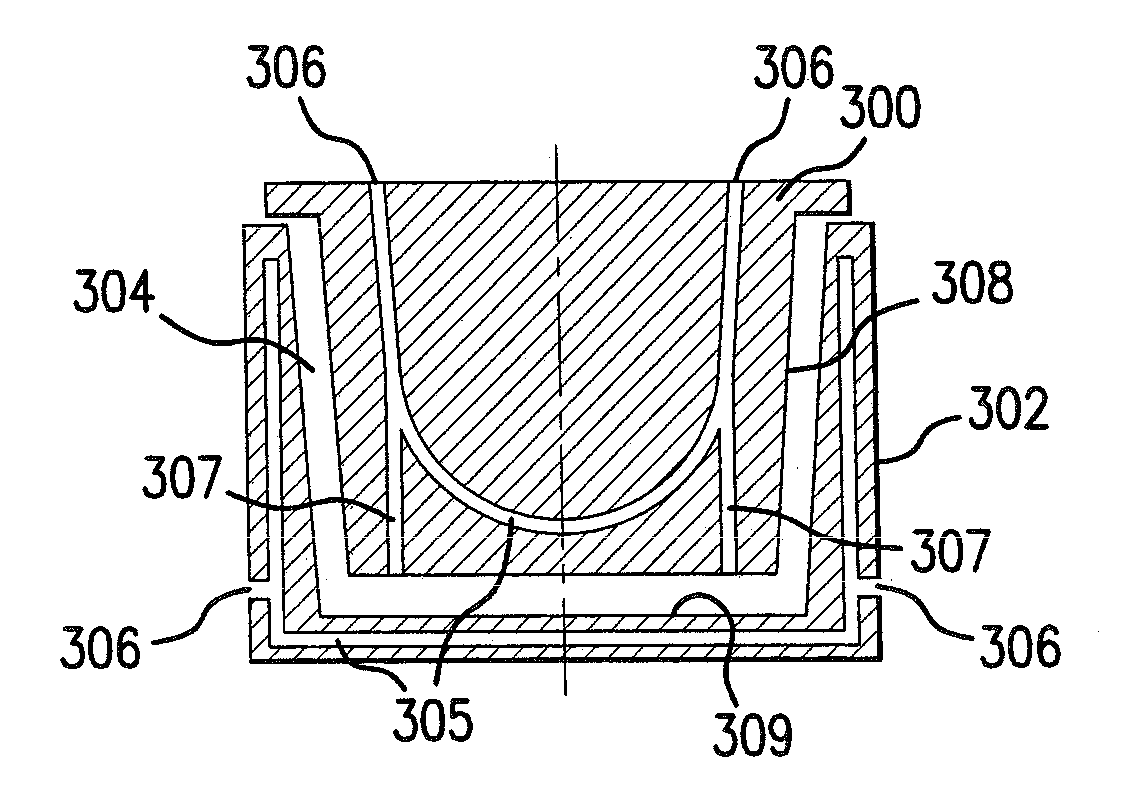Quartz glass body, method and casting mold for manufacturing same
a technology of quartz glass and casting molds, which is applied in the direction of glass making apparatus, glass growth process, glass shaping apparatus, etc., can solve the problems of inability to prevent or only hinder insignificant manner the uptake of water by the layer thickness of the separating agent, and the strength of this type of container suffers, so as to reduce the content of impurities, reduce the purity of the cast body, and simplify the manufacturing process
- Summary
- Abstract
- Description
- Claims
- Application Information
AI Technical Summary
Benefits of technology
Problems solved by technology
Method used
Image
Examples
Embodiment Construction
[0085]FIG. 1 is a schematic cross-sectional view through a casting mold according to the present invention. The casting mold comprises two parts, a core 100 and an outer part 102. The molding or shaping chamber 104 is between the core 100 and the outer part 102. The core 100 is clad or encased with a one-piece protective coating 101. The coating 101 comprises a watertight or water-impermeable material. It conforms to the shape of the core 100 and was prepared in this form, for example in an injection molding process. Silicone rubber is the preferred material for the coating 101. A silicone rubber coating with a thickness of 5 mm and a hardness of 60 Shore A has a sufficient strength for the present application.
[0086]The casting mold according to FIG. 2 is similarly shown in a cross-section view according to FIG. 2 and has a core 200 and an outer part 202. In this case the outer part 202 is coated with a pre-made cladding 203. The cladding 203 is made in one-piece and advantageously ...
PUM
| Property | Measurement | Unit |
|---|---|---|
| Time | aaaaa | aaaaa |
| Time | aaaaa | aaaaa |
| Percent by mass | aaaaa | aaaaa |
Abstract
Description
Claims
Application Information
 Login to View More
Login to View More - R&D
- Intellectual Property
- Life Sciences
- Materials
- Tech Scout
- Unparalleled Data Quality
- Higher Quality Content
- 60% Fewer Hallucinations
Browse by: Latest US Patents, China's latest patents, Technical Efficacy Thesaurus, Application Domain, Technology Topic, Popular Technical Reports.
© 2025 PatSnap. All rights reserved.Legal|Privacy policy|Modern Slavery Act Transparency Statement|Sitemap|About US| Contact US: help@patsnap.com



